Most European capitals have a cemetery, where the most distinguished and famous citizens were buried. What Père-Lachaise is to Paris and Highghate to London, Vyšehrad is to Prague.
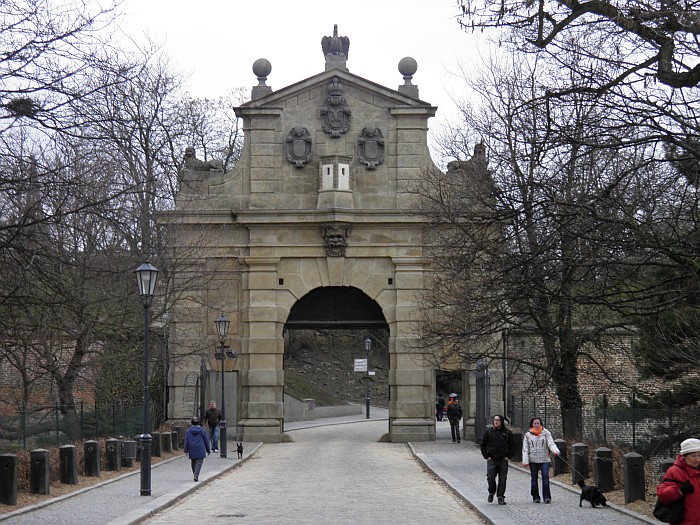
Vyšehrad Cemetery
The cemetery is part of a historical Vyšehrad castle, which was once a sit of the Přemyslid dynasty. Přemyslids moved to Prague castle in 12th Century. Vyšehrad was used as a fort and was damaged several times during the Hussite Wars and the Thirty Years’ War. Vyšehrad fort was rebuilt in seventeenth Century and was used as a training site for the Austrian army. After 1866, the fort’s importance diminished as the area was incorporated into Prague.
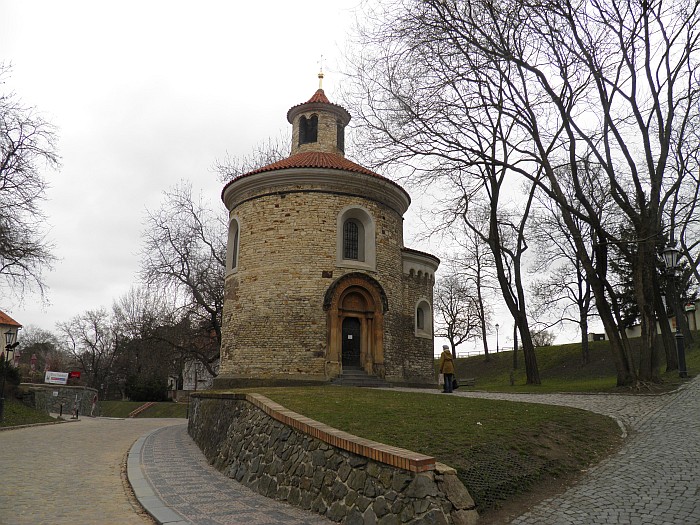
The fort complex is accessed through the Leopold gates. The gates, built in 17th Century were dedicated to a Habsburg emperor and Czech king Leopold I. During the French occupation in 18th Century, it was believed that the gates were haunted and that the ghosts of the dead soldiers walk around the area. The tale is said to have frightened French soldiers so much, that only the bravest would volunteer to guard the area during the nights.
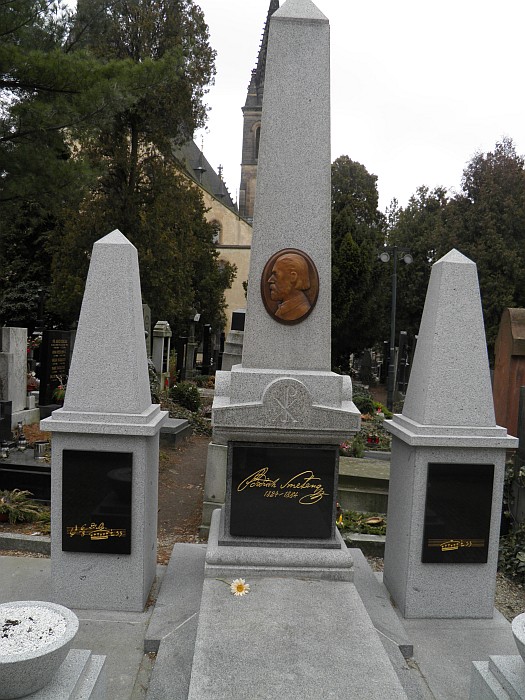
In the vicinity of the gates lies a the oldest building in Prague, rotunda of Saint Martin. This picturesque church was built in 11th Century. It was used as a powder magazine (a place to store gunpowder) while the fort was active. It received it’s original Romanesque appearance in the late 19th Century. Recently, a secret underground floor has been discovered, which nobody has knew of for centuries!
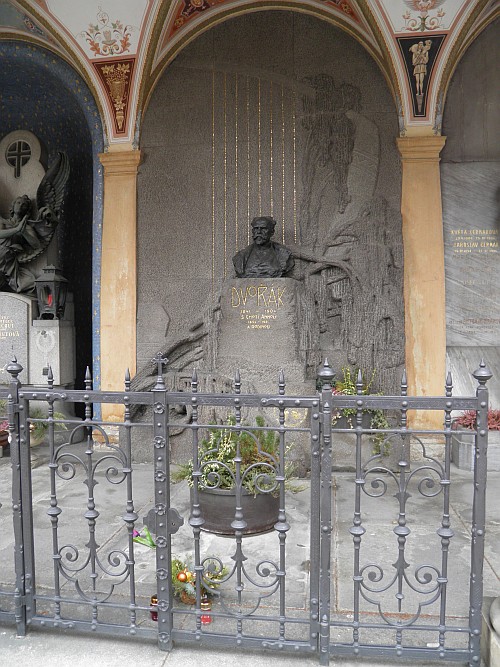
Two mighty bell towers of the Church of Saints Peter and Paul can be seen from far. This church, a symbol of Vyšehrad, was built in the late 19th Century in a Neo-Gothic style. It is located on the same spot, where a church has been built as early as in 11th Century. Church of Saints Peter and Paul was given a status of Basilica by the Pope John Paul II in 2003.
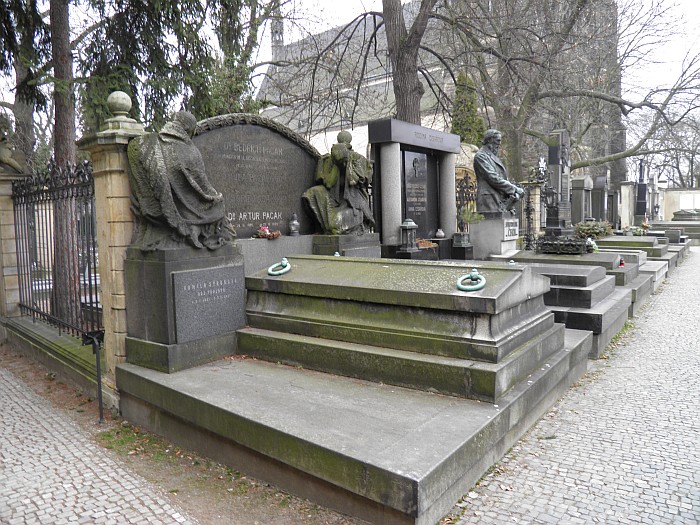
Surrounding the church is a cemetery, a final resting place to many of the most distinguished Czechs. The cemetery as we know it today, opened in 1869, when the Neo-Renaissance arcades were built. It was built on the place where people were buried since the 13th Century. With a special decree by Emperor Josef II, further burials were allowed on the Cemetery grounds even after the end of 18th Century. Many famous Czechs found a final resting place in the Vyšehrad Cemetery. Among the celebrities buried in the Vyšehrad Cemetery are composers Antonin Dvořak and Bedřich Smetana, artist Alfons Mucha, writer Karel Čapek and a painter Max Švabinský. There is also a Nobel prize winner, several architects and scientists, actors, singers and even a football player.
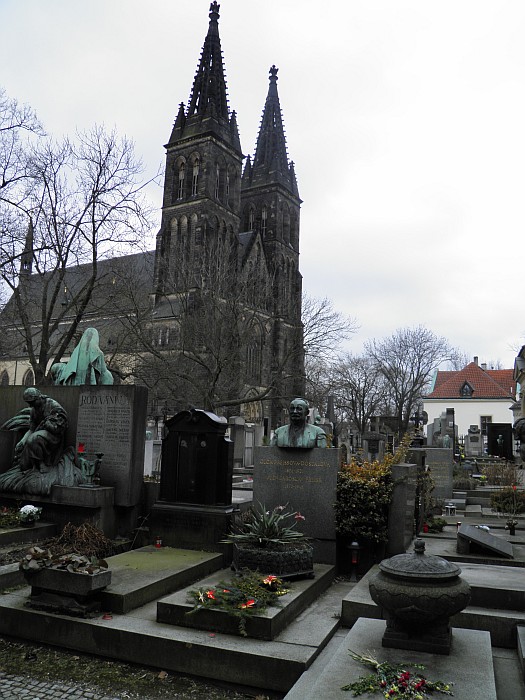
Many of the tombstones and statues were made by famous contemporary stone masons, which shows the importance of the Cemetery and the people that are were buried there. The monument, dedicated to Antonin Dvořak was made by Ladislav Šaloun, the same artist that made the Jan Hus memorial, that is located on the Old Town square.
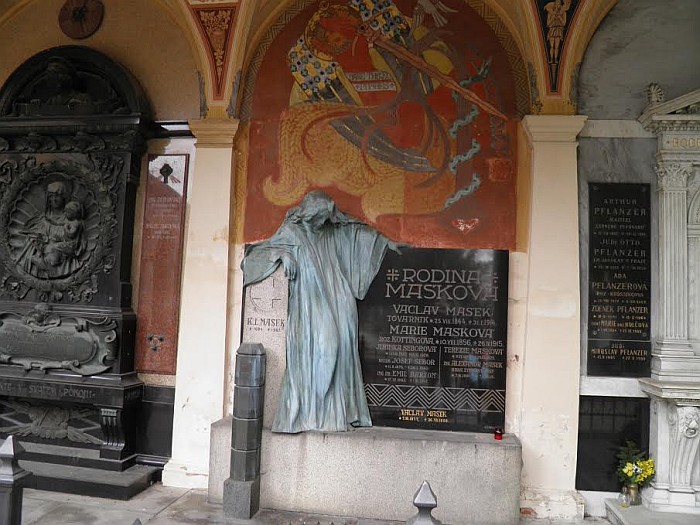
If you will ever find yourself in Prague, you should take time to visit Vyšehrad. A calm stroll in the park or the visit to the Cemetery offers a great contrast to the lively Prague streets.
